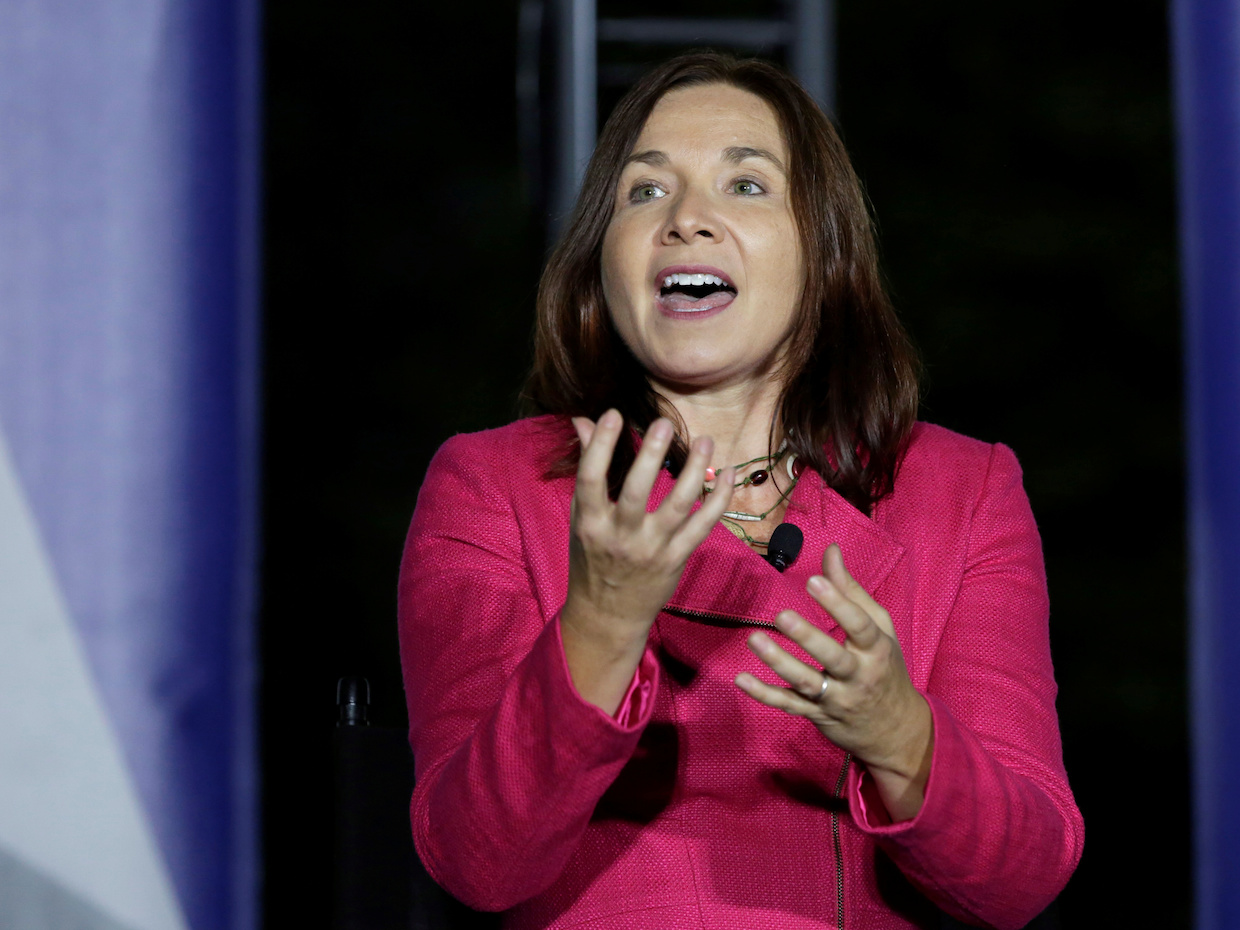- Climate scientist Katharine Hayhoe says she’s learned more about which of her behaviors contribute most to warming the planet by using a carbon footprint calculator.
- While she drives a plug-in car and uses energy-saving LED light bulbs in her home, she says that neither of those are the most important thing she’s done to reduce her contribution to a warming Earth.
- Instead, she now insists that when she must travel for work, she books more than one event at a time.
Recently, the news about our planet’s health hasn’t been great.
Studies have pointed out that we may be headed toward a “hothouse” Earth scenario – a catastrophic tipping point that could cause seas to rise another 200 feet, inundating many major cities. Scientists and engineers have now started proposing that we build giant Antarctic sea walls to keep melting glaciers from slamming into our shores.
But not everyone is wallowing in despair.
One climate scientist in Lubbock, Texas, is making her own set of changes at home to help keep the planet cool.
It started with a lightbulb
"The first thing I did, was I said 'Ok, let's just look at the light bulbs,'" climate scientist Katherine Hayhoe told Business Insider.
Hayhoe directs the climate center at Texas Tech, and she also consults for cities, water districts, and highway planners around the country about the best ways to prepare for life in a warmer world.
She says if every home in the US swapped one regular lightbulb out for an LED bulb, which uses about 75% less energy, that would reduce emissions as much as taking 800,000 cars off the road. "That's actually pretty significant," Hayhoe said.
Still, she had a hunch that changing lightbulbs wasn't the most significant thing she could do to reduce her carbon footprint.
No two people consume energy in the same way. While some may push more carbon dioxide into the atmosphere when they're driving around in a car, others might leave a bigger CO2 "print" using throw-away plastic containers, eating lots of meat, or plugging in energy-hogging appliances. All of these require oil and gas, and contribute to climate change.
Hayhoe plugged her own energy habits into an online carbon footprint calculator, trying to determine which single act she could cut back on to help the Earth. As it turned out, it wasn't her lights, but her flights.
"For me as a climate scientist, the biggest part of my personal carbon footprint was travel," she said. "Because I travel to tell people about climate change. It's very ironic."
Hayhoe isn't the only one. The US Environmental Protection Agency (EPA) estimates that aircraft account for about 12% of all transportation-related greenhouse gas emissions in the US.
A single round-trip flight from New York to San Francisco "emits about 0.9 metric tons of carbon dioxide per person," according to The New York Times. Take five of those flights, and you've generated the same amount of emissions that the average car spits out all year long.
Hayhoe cut back on her flights, but she hasn't stopped traveling altogether
Hayhoe says she's not ready to completely swear off air travel.
"Don't beat yourself up, because none of us can live carbon-free lifestyles yet. We just don't have the ability," she said.
But she has cut back. When she was recently a "visiting" scholar at Canadian Mennonite University in Winnipeg, she held coffee hours, taught classes, and hosted question and answer sessions, all without leaving her Texas home. She burned up just a fraction of the energy it would have taken her to fly to Canada, instead only guzzling enough electricity for computer plugs, cameras, and projectors.
"I was talking about climate change," she said. "This was the way we could do a zero carbon talk."
Hayhoe says since she adopted her new rule, just one university (Princeton) has turned down her request to video conference instead of traveling for an in-person talk.
"I can't fly all the way to Jersey to give a single, 45-minute seminar," she said.
Instead, when she does travel, she insists on collecting a critical mass of at least three, four, or five invitations at a time. She tries to consolidate her travel schedule enough so that each talk, averaged out, has the emissions equivalent of an hourlong drive.
Her record-breaker trip to date was to North Carolina last year, where she did 25 events in 4 days.
"That was a bit much" she said. "But it was fantastic, because I was able to model what I was doing."
Hayhoe would love to fly in algae-fuel powered plane
Hayhoe says there is one surefire way she could be coaxed back into her old, jet-setting ways.
"I would love to have an algae-fuel powered plane," she said. "That technology exists. It's just that it isn't cheap enough yet."
While there are not yet any special algae-subsidies that offset the high cost of producing the novel (and nearly carbon-neutral) jet fuel, the same is not the case for the well-established coal, oil, and gas industries. They aren't taxed much for all the dangerous pollution they produce.
The International Monetary Fund (IMF) estimated in 2015 that energy subsidies prop up the fossil fuel industry to the tune of about $166,000 per second. There's no way one person's action is going to balance a global economy that makes fossil-burning fuel cheaper than alternatives. Like forgoing a plastic straw, this is simply a first step.
"We have to forgive ourselves for what we can't do, but we have to make sensible choices to reduce what we can," Hayhoe said.
If you want learn more about Hayhoe's work, check out this recent 5-minute documentary on her, created as part of a Let Science Speak series:

